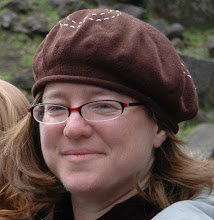 I am one of those freaks who reads Herodotus' History of the Persian Wars every year. Ok, not every year: this year I am on sabbatical, but of the past fifteen years, I have read it a good twelve times. We are about to change the syllabus for our freshman humanities program at the college where I teach, but Herodotus is still on it, so it is safe to bet I will be teaching and reading it for many years to come.
I am one of those freaks who reads Herodotus' History of the Persian Wars every year. Ok, not every year: this year I am on sabbatical, but of the past fifteen years, I have read it a good twelve times. We are about to change the syllabus for our freshman humanities program at the college where I teach, but Herodotus is still on it, so it is safe to bet I will be teaching and reading it for many years to come.
As an orthodox Jew, I have also been reading each year a book that is new to our revised syllabus: the Megillas Esther. Starting next fall in our humanities course, right after we read Herodotus' account of why the small but heroic Greeks were able to take down the mighty Persians, we will turn to the Persian city of Persepolis, the Cyrus Cylinder, and the books of Esther and Ezra. According to Rabbi Yehuda Landy, we'd probably want to look at the ancient city of Susa as well.
Rabbi Landy is the author of the recently released Purim and the Persian Empire. In it, Rabbi  Landy makes extensive connections between archeological finds in the Middle East and the Megillas Esther. Although archeology is always an interpretative "science," Rabbi Landy takes a now mainstream approach and argues that King Achashverosh was Xerxes (I) and that the story of Purim took place at his palace at Shushan (Susa).
Landy makes extensive connections between archeological finds in the Middle East and the Megillas Esther. Although archeology is always an interpretative "science," Rabbi Landy takes a now mainstream approach and argues that King Achashverosh was Xerxes (I) and that the story of Purim took place at his palace at Shushan (Susa).
Rabbi Landy's magnificent volume is sure to delight Jewish readers of almost any age and educational background. My favorite page was the plan of the palace on page 26 which connects each room to the line that references it in the Megillah; my children (ages 2 and 4) loved the full-page color photographs of the glazed bricks featuring members of the royal guard. They also loved the photos of the excavated jewelry and golden drinking cups. When we finished looking at the book and talking about the story of Esther, they asked to go through it "again" and kept picking it up and asking about it over the course of the weekend. They found the Persian writing (page 41) particularly funny. I also loved the book: it opened my eyes onto a whole new view of the book of Esther and that curious king Achashveros. In Herodotus' Histories, Xerxes comes across as a rather crazy despot, famous for having ordered the Hellespont River to be lashed three-hundred times for disobedience. Placing Xerxes in the context of the book of Esther makes for a more nuanced and interesting view luxuries that "corrupted" and softened the Persian Empire. It also made me look forward to listening to the Megillah this year with new ears and eyes.
I also loved the book: it opened my eyes onto a whole new view of the book of Esther and that curious king Achashveros. In Herodotus' Histories, Xerxes comes across as a rather crazy despot, famous for having ordered the Hellespont River to be lashed three-hundred times for disobedience. Placing Xerxes in the context of the book of Esther makes for a more nuanced and interesting view luxuries that "corrupted" and softened the Persian Empire. It also made me look forward to listening to the Megillah this year with new ears and eyes.




Sunday, February 14, 2010
Book Review: Purim and the Persian Empire
Subscribe to:
Post Comments (Atom)



0 comments:
Post a Comment